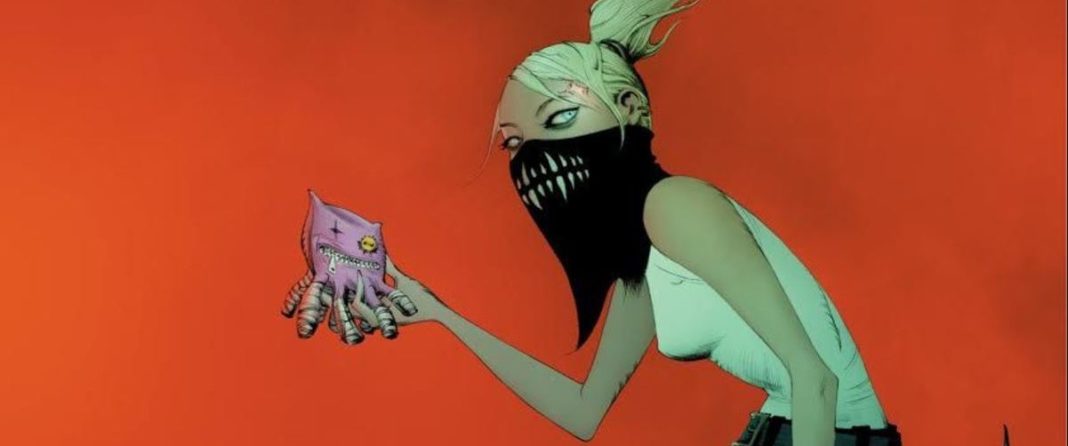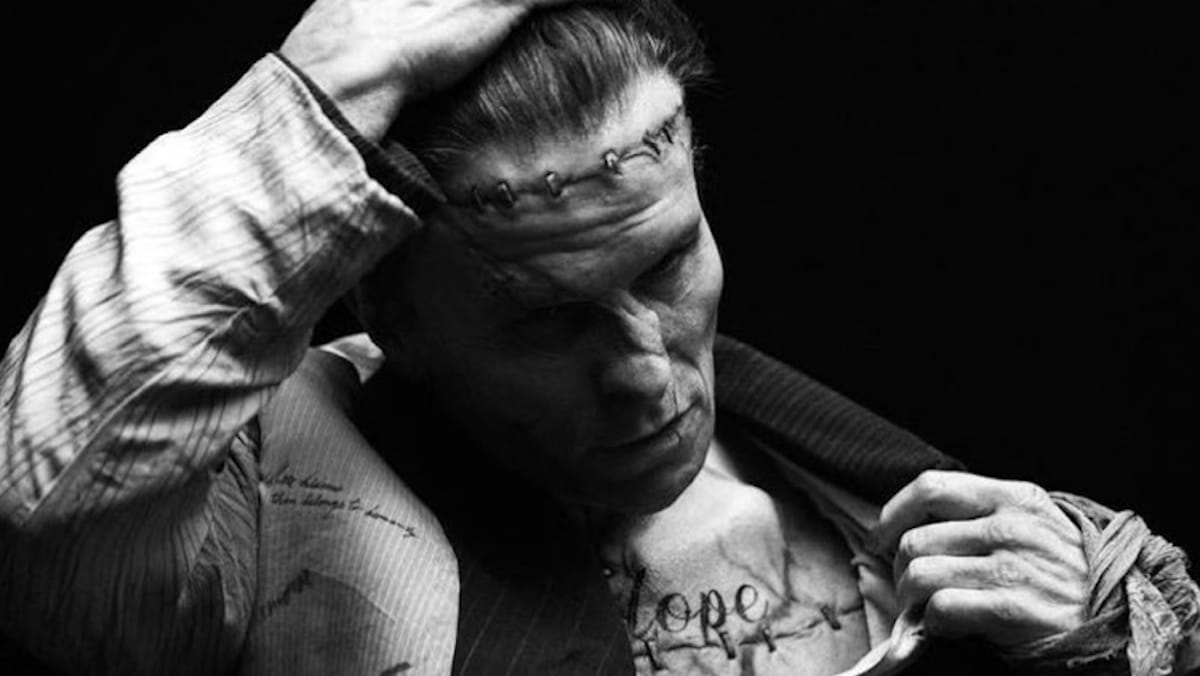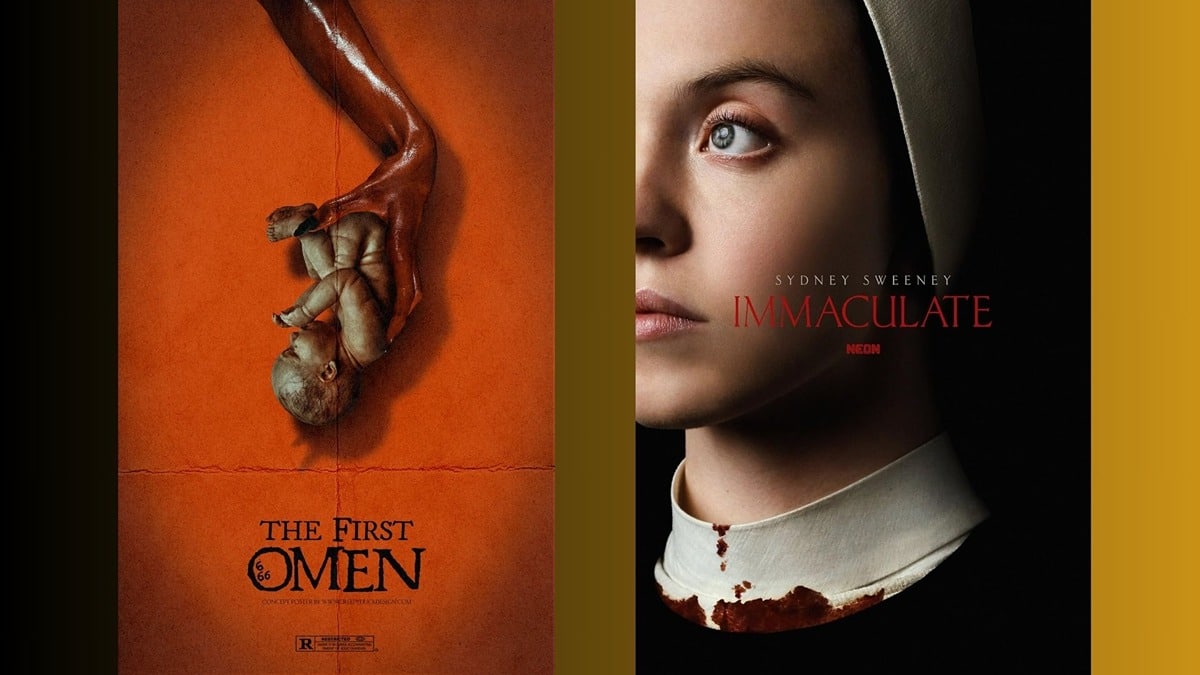James Tynion IV is no stranger to horror involving children. His excellent creator-owned series The Woods, illustrated by Michael Dialynas, puts a whole school in a forested moon surrounded by horrors that defy sanity. His new series, Something Is Killing the Children (eerily illustrated by Werther Dell’Edera), hopes to wrap up childhood in a bloody blanket that offers no comfort.
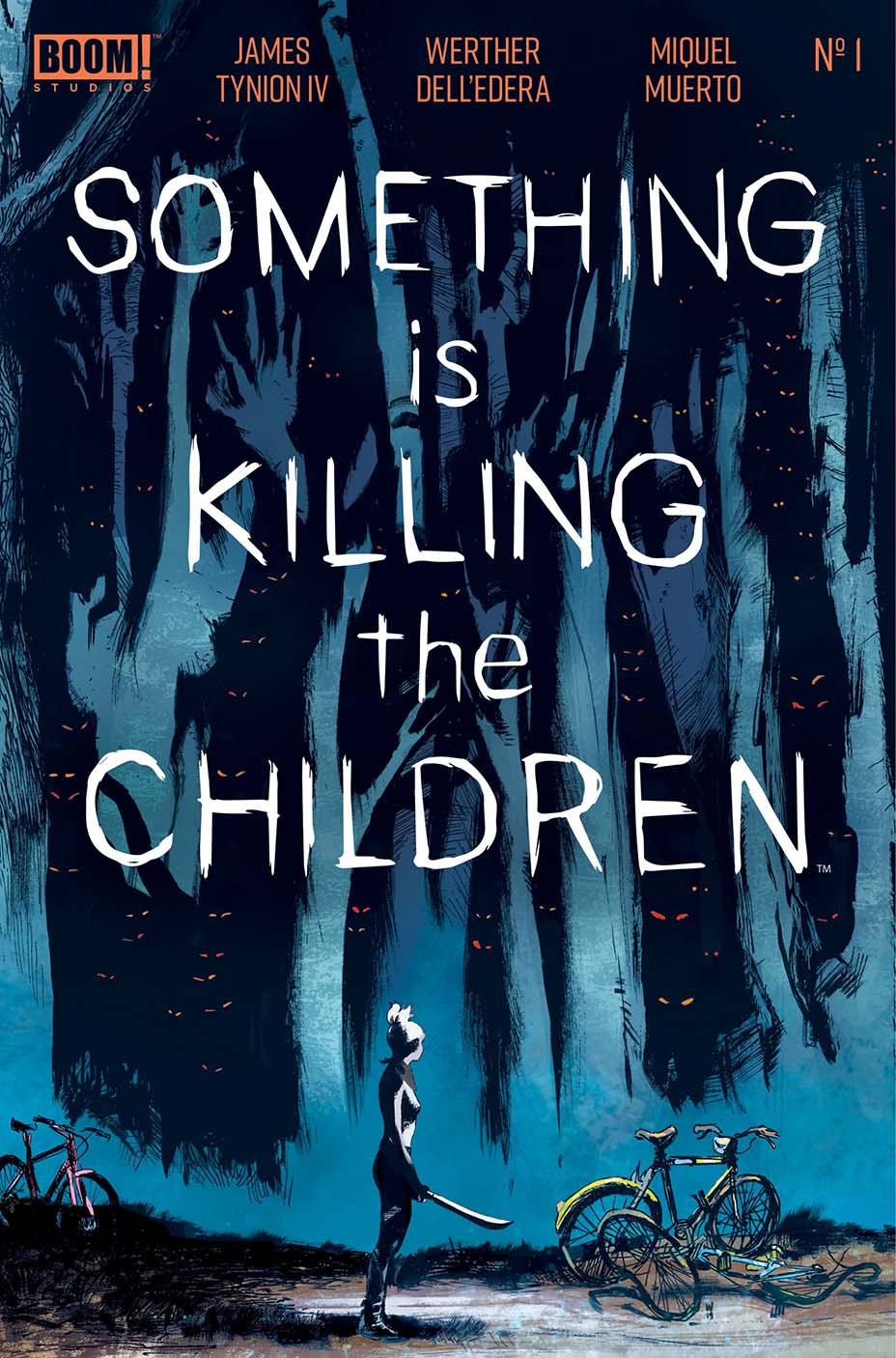
The story follows a boy that lives in a town marked by a recent string of child deaths. A mysterious girl called Erica Slaughter seems to know how to stop the killings. What’s causing the killings is a more terrifying matter altogether. Tynion and Dell’Edera pull the curtains back on a lethal environment where the subject of mortality becomes a serious consideration at too young an age. Death surrounds the town and its future generation, and safety is but a word quickly losing its purchase on reality.
Having read the first issue of the series, which was originally set to last five issues but has now transformed into an on-going, I can guarantee the book takes its title to heart. This comic has no intention of holding back on horror, violence, or gore as the road its characters travel looks to be dark for quite some time before reaching anything resembling light.
Something Is Killing the Children #1 already feels like an HBO series in tone and ambiance. It takes from certain YA elements as it unravels, but Tynion and Dell’Edera have taken off the gloves and are ready to push boundaries. Having said that, nothing felt gratuitous. Every bit of blood spilled serves the story and is not taken for granted. The story is challenging. It has a dark but understanding heart. No matter how heavy it gets, you still come out rooting for the characters presented in this first issue to do something that stops the killings. News of this series becoming on-going is nothing short of a blessing.
The Beat had the chance to interview James Tynion IV and editor Eric Harburn on the upcoming series and what it means to not just tackle violent childhoods but to extend it into an on-going story.
Ricardo Serrano: First of all, congrats on Something Is Killing the Children becoming an ongoing series.
James Tynion IV: It’s really exciting news! That there’s this kind of support for the book already is something special. Now I have to deliver book worthy of all of it. When I originally pitched the story I envisioned it as a series of one-shots, with our monster hunter arriving in a town where child killings or child disappearances were happening. We would kill the monster and then jump on a bus and go to the next town. It was in the mold of those self-contained Hellboy stories. But when I started writing the stories I saw it was bigger than that, so I decided to keep it to five-issues on a single town. It couldn’t be contained. Now that it’s on-going we can live in the horror drives the story further, develop the town and how it deals with monsters and child safety. I could not be more excited about this opportunity.
Serrano: How do you approach this change in length and scope from an editor’s point of view, Eric?
Eric Harburn: Anything on my end is making sure everything is feasible and putting the tracks in front of the team so they can tell the best story possible. This book is very different than what we had worked on together before, like The Woods. Something Is Killing the Children came together quite quickly and pretty full formed. At the start it was a Rashomon thing where we were going to five towns in five issues, one issue per town. By issue two it became clear getting multiple arcs would better serve the story. So I’m glad we got the opportunity to extend our stay.
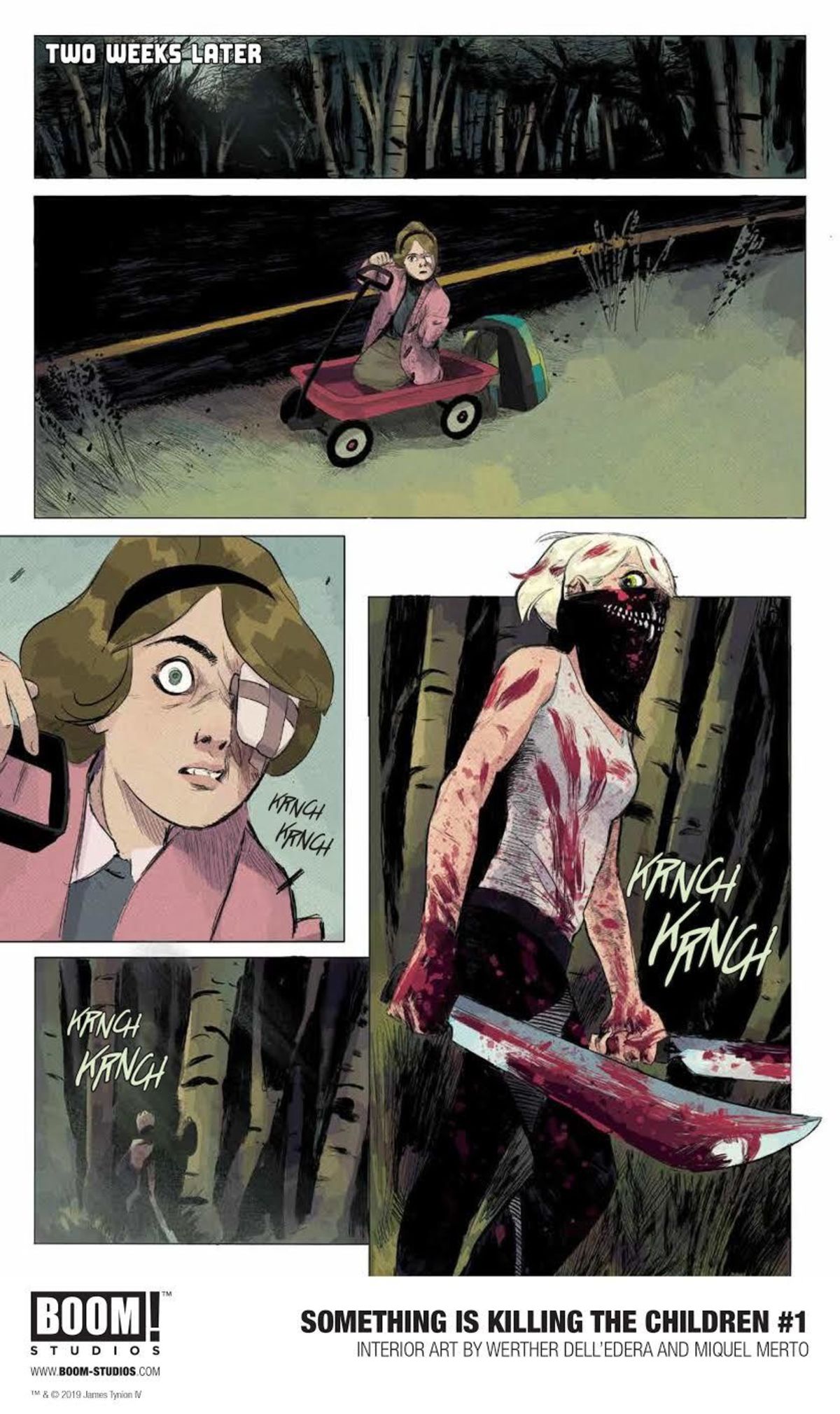
Serrano: Given the political climate we’re in, on what should or shouldn’t be shown and what’s appropriate, how did you approach the story’s visceral take on violence. I for one appreciated the risks that were taken in service in the story and how confrontational it can be.
Tynion: So far, everyone’s been really supportive for the story being what it was going to be. I pushed this a few degrees darker than people were expecting, on top of it being obvious we were going to go into some pretty dark corners. We definitely had conversations on whether we wanted adult language or whether we wanted to censor that out. We got to the point where we decided the story should dictate whether these things were necessary or not. We looked at what was needed. We all want this to be what it needs to be to find real horror.
Harburn: We really appreciate James coming to the table and having these conversations. He was bringing all these considerations into the discussion and we made it to the point were we knew what was required to make this story work. We talked about every word and every bit of violence that went into comic and we’re confident every evocative image and every piece of language is justified and is in the book for a reason. This is our first book since Eugenic together, so it’s been a couple of years, so we really wanted it to be reflective of James’ career and his work. I feel like this is a very different book from James’ previous series. He’s pushing his own boundaries and we at BOOM want to be as supportive of his vision as possible.
Serrano: The comic has its own overarching sense of dread to it. Given your previous work on horror, do you know what works best for you not just within the genre but within the comics medium? I’m thinking about how comics don’t have the luxury of jump scares or other extra sensorial elements that help capture that.
Tynion: I think what comics do best in horror is build dread. Comics is all about pacing. The reader has a lot of control there but you can still dictate a certain pace with the amount of language and text on each page or how you decide to breakdown the panels. I mean, the closest we have to a jump scare is a page turn, and even then it’s not quite the same thing. What you can do is introduce something that stays under the skin, an idea or an image. You can then linger on it and control how much the reader should linger on it. That’s how you get emotional pacing. I think one of my biggest influences in horror is Junji Ito and my favorite of his long-form works is Uzumaki. He manages to get some very horrifying images, but what’s impressive about that book is the slow-building dread behind it. It dials up and up and up. That’s something I’m definitely trying to evoke here.
Serrano: Thanks for your time and good luck with the already successful comic!
Tynion: Thank you!
Harburn: Thanks!
Something Is Killing the Children #1 hits digital and comic book stores on September 4.


